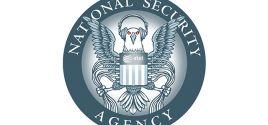Don't Call for an Ambulanceby Laurence M. VanceAug. 22, 2012 |
Popular 
John Hagee Cheers Israel-Iran Battle as 'Gog and Magog War,' Will Lobby Congress Not to Deescalate

Right-Wing Media See Traffic Plummet in Wake of Algorithm Changes by Facebook, Google

Patriot ACT on Steroids: FISA Bill Forces 'An Enormous Range' of Businesses to Act as NSA Spies

Congress Introduces ADL-Backed 'Countering Antisemitism Act' to Police Online Speech

Reuters: Iran Gave 'Wide Notice' Days Before Attack on Israel
 The two recent high-profile and highly deadly shootings in the United States have been the occasion of much dialogue about “gun control.” Liberals, predictably, have generally called for more and stricter gun-control laws. Conservatives, to their credit, have generally argued to the contrary (even though they have accepted decades of various federal gun-control laws that make a mockery of the Second Amendment). But gun control is not the only issue related to the shootings that has come up. After any shooting — whether there are multiple victims or just one — there is one thing that is needed even more than the police: an ambulance. After the shooting on a Sunday morning earlier this month at a Sikh temple in Oak Creek, Wisconsin, more than 60 paramedics and EMTs rushed to the scene in 22 fire trucks and ambulances. But such was not the case after the midnight shooting last month at a theater in Aurora, Colorado, where some ambulances remained idle while police pleaded with dispatchers for more ambulances to come to the theater. According to an account of events in the San Francisco Examiner, it took dispatchers more than 20 minutes into the crisis to ask the Cunningham Fire Protection District and other nearby agencies to send extra ambulances to the site of the shooting: On the police radio transmissions, officers said they lacked sufficient medical support for about 30 minutes after the 911 calls came flooding in around 12:39 a.m. and that medical teams didn’t report getting inside the theater for about 24 minutes....Scot Phelps, professor of disaster science at the Emergency Management Academy in New York, says the ambulance system in the United States is a public-policy disaster. He was recently interviewed by Robin Young on PRI’s Here and Now (“Getting the 4-1-1 on 9-1-1 Emergency Response”). According to Phelps, much of the country depends on a patchwork system holding ambulance services together: privately owned ambulances, publicly owned ambulances, and, increasingly, paramedics who arrive on the scene in fire trucks instead of more-costly ambulances. The result is that many cities have failing emergency-reponse systems. Philadelphia has so few ambulances that police end up transporting as many as a third of shooting victims to the hospital in their squad cars. An ambulance in Detroit broke down in the middle of a gun battle last New Year’s Eve. “The problem is that the resources are not going to the ambulance system, whether it’s a fire department system or a private system,” Phelps said. “I’m not going to say we have too many fire trucks, but we certainly don’t have enough ambulances, no matter who’s operating the system.” He argued that poor funding was the key factor that contributed to the low number of ambulances in some communities. “The fact that the private ambulance company has to rely to a large extent on billing Medicare and Medicaid means they’re not going to staff a dozen ambulances just to have them standing by,” Phelps said. He also believes ambulances should be reimbursed for the real cost of care they provide, instead of just for transporting a patient to the hospital. Things obviously haven’t changed since USA Today did a three-part story in 2005 on the state of emergency medical systems in the United States. Its 18-month investigation found fragmented, inconsistent, slow emergency medical systems in most of the nation’s 50 largest cities; delays in providing emergency care caused by infighting and turf wars between fire departments and ambulance services; issues with firefighters’ and paramedics’ unions; and needless deaths because some cities fail to make basic, often inexpensive changes in the way they deploy ambulances, paramedics, and fire trucks. The provision of ambulance services is another example of how government intervention at all levels has so permeated the health-care system in the United States. Most people never think about having to be transported in an ambulance after an accident, a heart attack, or a shooting incident like the ones that recently occurred in Colorado and Wisconsin. Other than places such as Washington D.C., which estimates it saves only 4 percent of cardiac-arrest victims, Americans generally expect an ambulance to show up and take them to the hospital after they call for one or someone sees their plight and calls 911. I suppose that few Americans have ever pondered who should provide ambulance services and who should pay for them. No one would question the idea that anyone who makes a trip to an airport, a store, a movie theater, a theme park, or even a doctor’s office should drive himself, persuade someone else to voluntarily transport him, or pay a friend, neighbor, or cabbie for the ride. But let someone have a heart attack or gunshot wound, be unconscious or in agonizing pain, or be bleeding profusely or severely burned and that supposedly changes everything. Now the government is looked upon to provide emergency services to be paid for by the taxpayers. But is it not true that it is not the fault of the person who has a heart attack, is shot, is unconscious, is in agonizing pain, is bleeding, or is burned that he needs an ambulance? Yes, but that doesn’t make it the fault of the taxpayers. And from the fact that the current patchwork ambulance system is, in the words of Scot Phelps, “a public-policy disaster,” it doesn’t follow that the answer is more government intervention or control. In a purely free-market system, private companies would compete for business by getting to sick customers promptly, getting them safely to the hospital, and providing them necessary medical care on the way. They would have every incentive to avoid delays, avoid accidents, and avoid poor-quality treatment. Even with a real free market for ambulance services, there would certainly also exist voluntary ambulance services much like volunteer fire departments — just as they exist now. Just to give one example, the Hillsdale Volunteer Ambulance Service, which has been serving Hillsdale, New Jersey, residents since 1954, “provides emergency medical response to Hillsdale residents and surrounding communities on a mutual aid basis 24 hours a day, 365 days a year. In the last 12 months we have responded to well over 1,000 calls. We are always here for you, and we never charge for our services.” And there is no reason to think that a private ambulance service would require payment up front before they transported a dying man to the hospital. Emergency-room physicians want to make a living as much as you and I, but they don’t let trauma victims die on a stretcher while they try to extort cash out of their grieving relatives. Ambulance services should simply be billed like any other medical procedure and be paid for out of pocket, through health insurance, or by charitable organizations that help the poor with medical expenses. But privatizing all ambulance services is not enough. All aspects of medical care should be deregulated and released from government control. That includes medical licensing, medical devices, organ donations, medical insurance, medical records, medical research, clinical trials, hospital admissions, drugs, vaccinations, and medical schools. And not only should Medicare and Medicaid, i.e., the taxpayers, not pay for ambulance services, those programs should not even exist in the first place. Should, God forbid, you have an accident, a heart attack, or be involved in an “incident,” I hope an ambulance arrives quickly to take you to the hospital. But don’t call for an ambulance if you are expecting someone else to be forced to pay for it. _ Laurence M. Vance is a policy advisor for the www.vancepublications.com. Send him email. |



